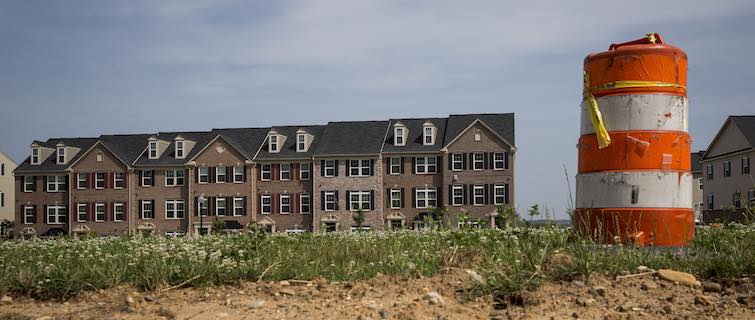
“Want to see the property?” the town manager asked Robert Cristiano, Ph.D., a faculty member for the Master’s in Real Estate program at Georgetown University.
Yes, indeed, said Cristiano, a veteran real estate developer. He had come to the tiny Washington, D.C., suburb of Capitol Heights, Maryland, (population: about 4,500) to talk about three publicly owned parcels the township has long wanted to see developed.
For the first one, they didn’t need a car. They simply walked out the door of the two-room township office and found themselves on a vast, 2.5-acre field that overlooked the Capitol Heights Metro station.
That’s right: A Metro station, just one stop from D.C., sitting next to a flat, empty, eminently developable field.
And you’re telling me that nobody is interested in this property?” Cristiano asked.
“Yes.”
“Well, Georgetown is interested.”
A Real-World Project
To be sure, the University isn’t developing the property. But in Capitol Heights’ vacant, underutilized land, Cristiano saw a wonderful opportunity for his students in the Real Estate program. Rather than deal in hypotheticals for their final capstone thesis, they could collaborate with the township and Prince George’s County on proposals that actually might be built.
So far, students are working on proposals for seven separate parcels: including two at the Metro stop, another at First Baptist Church of Capitol Heights, and one at a long-vacant school that can be re-utilized as affordable housing.
For the church, graduate student Ernest Williams III has proposed a new church to replace the 1952 building and the addition of 88 senior apartments, 60 percent of which would be designated as affordable—priced at 60 percent of the county’s adjusted median income. Forty-eight percent of the cost of the $23 million project would come from federal, state, and local government sources; 43 percent from bank loans; and 9 percent from private equity. The church’s equity for the project comes from the land itself, valued at $596,000. In addition to getting a new church building and senior apartments that could serve an aging congregation and other seniors, the church would gain a regular income through rent payments.
Williams said he was delighted when Cristiano suggested him for the project.
“I’ve always been interested in mission-oriented development and particularly faith-based development,” said Williams. “I was given the opportunity, and I jumped on it.”
More Proposals to Come
The other projects include a five-story mixed use development on the field next to the Metro Station. Proposed by Real Estate student Marco Murillo, the project would have 180 housing units, 45 of them in the affordable-housing range. A proposal for a third site—on 1.8 acres that includes the abandoned school—is expected to be presented in December by graduate student Ezra Kauffman-Rogoff. An additional four projects are underway with this semester’s capstone projects, Cristiano said. All the projects are being done in partnership with Prince George’s Economic Development Corporation.
With a median household income of $68,000 and a poverty rate of 12 percent, Capitol Heights isn’t a distressed community, but it isn’t thriving either. For comparison, the Ballston-Virginia Square area in Arlington, Virginia, which is experiencing tremendous growth, particularly around the Ballston Metro station, has a median household income of more than $175,000.
This is one reason why it’s been hard to attract development to Capitol Heights—and why the area presented an opportunity for the partnership.
In 2013, the town of Capitol Heights reached out to potential developers of the property near the Metro by issuing an RFP (request for proposals). But only one firm responded, and it later dropped out. The township didn’t have the money or the staff to do feasibility studies of this and other property it owned, and that’s where Georgetown came in, offering to have its Real Estate students do that work for free.
“It fits so perfectly with Georgetown because our students need real projects to work on, not hypothetical ones,” Cristiano said. “And Georgetown’s charge is to care for the underserved and disadvantaged parts of our community.”
Cristiano has even coined an acronym for this type of project, calling it an AP3: Academic Public-Private Partnership.
Ernest Williams’ proposal for First Baptist Church considers the multiple needs of the church and community. Like many mainline churches, the congregation is getting older, and there is a shortage of affordable senior housing in the area. After researching how another local Baptist church, The Church at Clarendon, in Arlington, Virginia, incorporated senior housing into its redesign, Williams found a way to do something similar in Capitol Heights.
“I was trying to figure out the best way to preserve something for the community, and make a living [for the church] at the same time,” Williams said. “It checked all the boxes.”
